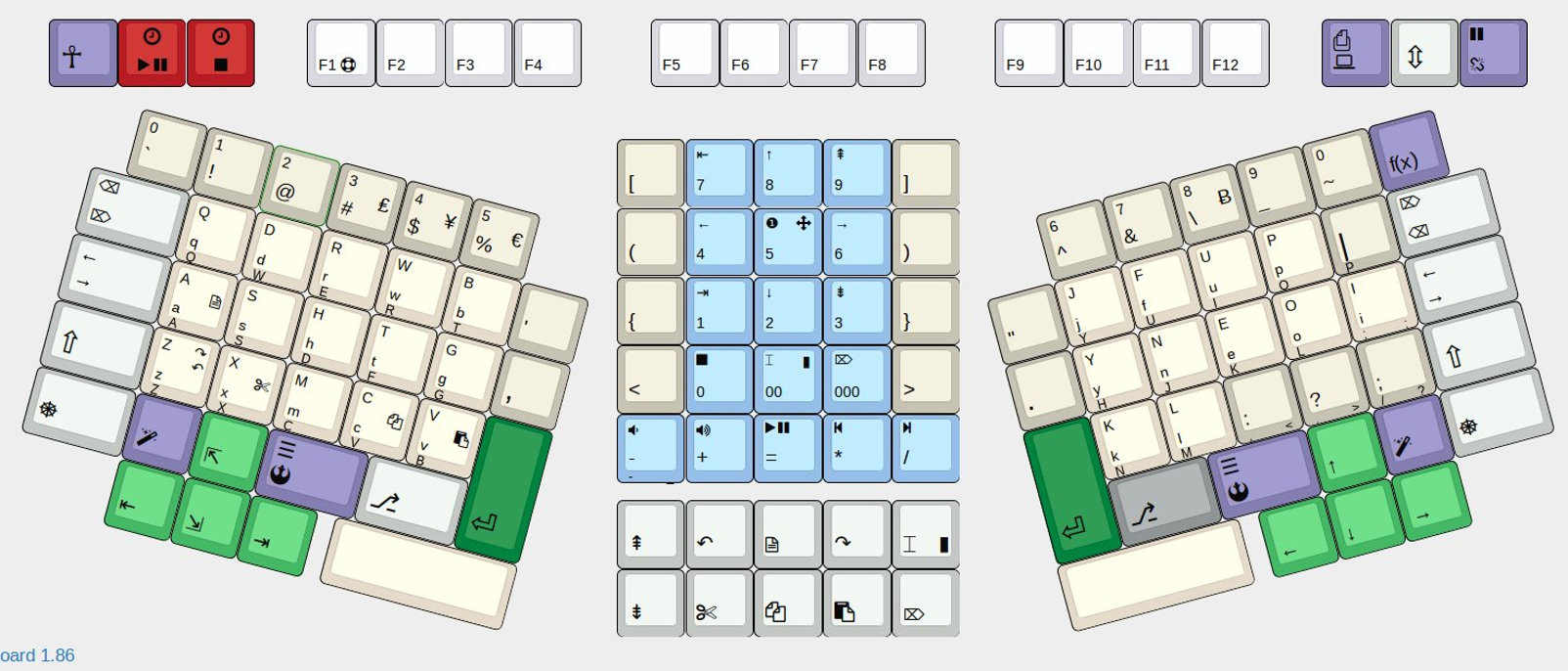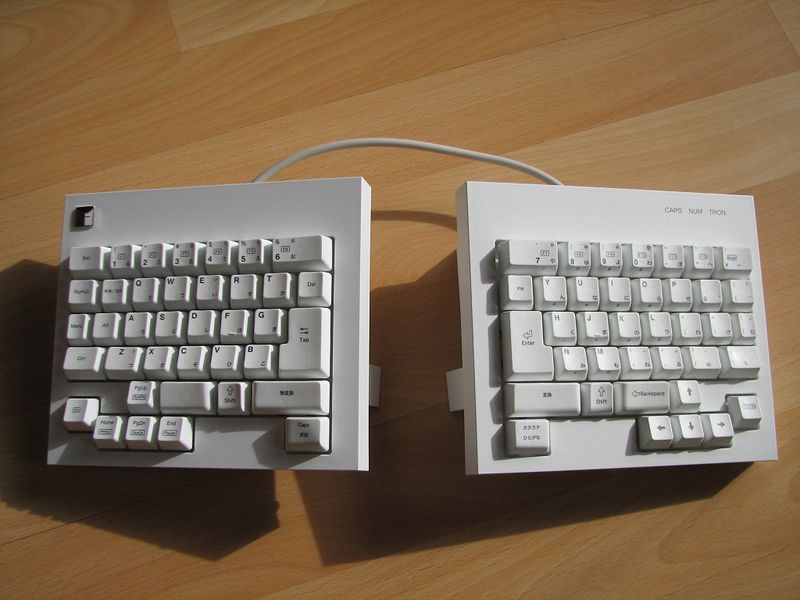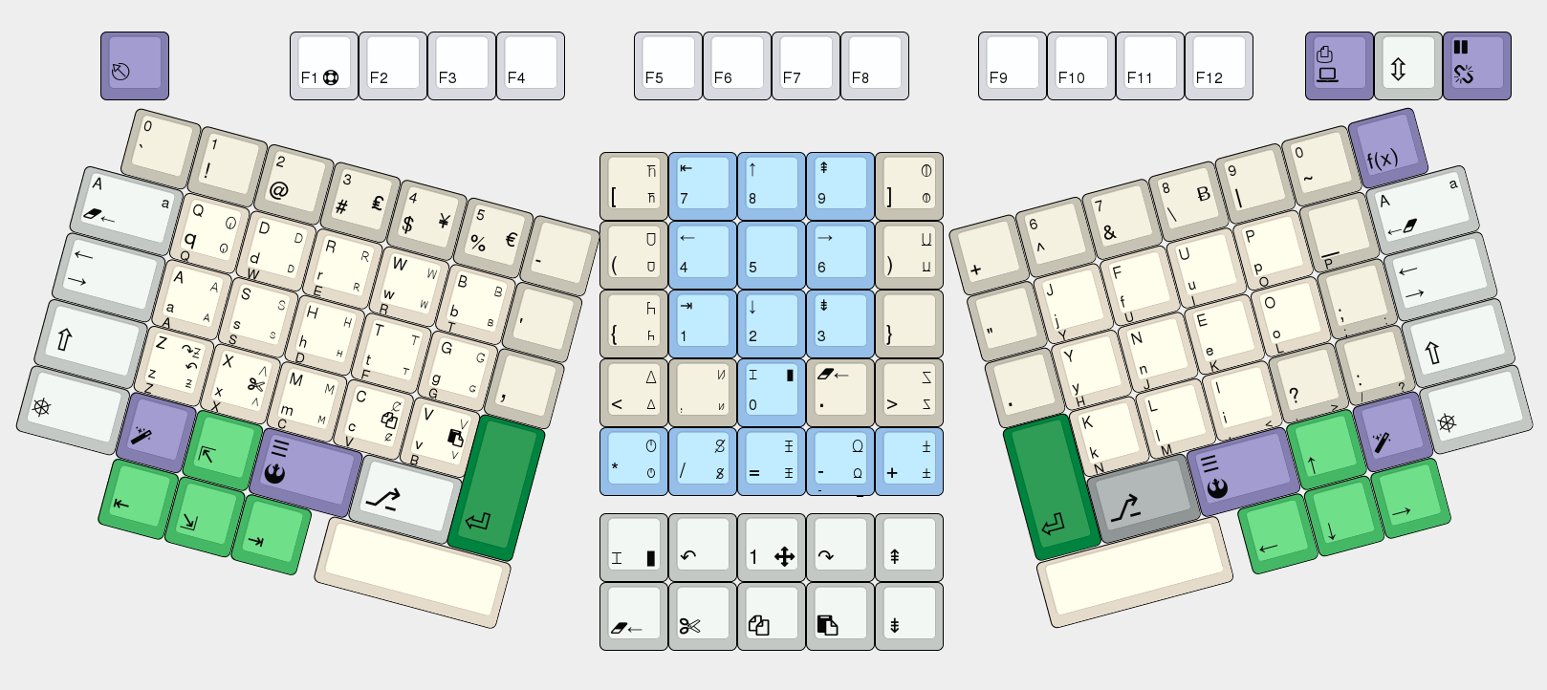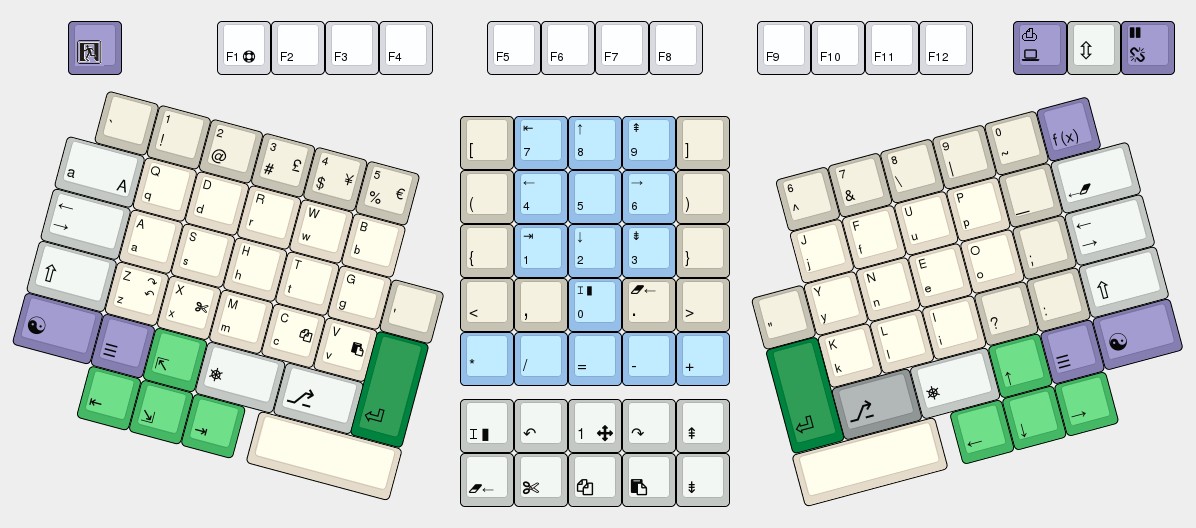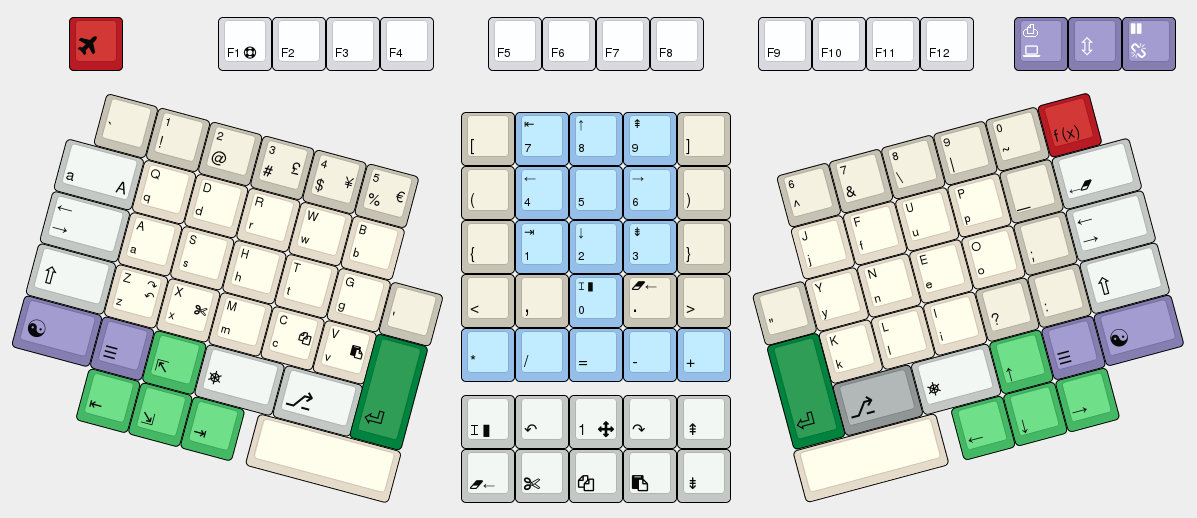I’ve put further progress on my keyboard, and much else besides, on a dedicated site, http://www.keyboard-design.com
Category Archives: Keyboards
Somewhat overboard (PKB part 9)
Continues from Part 8
It’s been a while since I’ve posted any progress here. Despite that, things have not been standing still. Was actually rather shocked to see that it’s co-incidentally a whole year since my last post on the topic.
Much has happened. Following on some of the feedback received, I have done the following, this list is probably not in the timeline order, or importance order:
Now I need to insert “read more” here instead of after the first point below because those WordPress people broke WordPress again.!!!!!
Getting closer to final design (PKB part 8)
Just a roundup to bring things up to date. At some point between my last post and now, I started helping Ian Prest with his Keyboard Layout Editor website. So this has resulted in a more rounded version of my design.
I won’t bore you with every little changes but the bigger steps were adding Tomatoro buttons for start/stop and end. The idea is that there is a built-in timer for the Pomodoro technique as an aid to productivity (or to limit goofing off, if you like).
KLE was now showing the author and title of the design so I removed it from the space bars. I then helped IJP implement backgrounds, so we could get something more realistic like this: Continue reading
Design osmosis (PKB part 7)
Continues from Part 6
As I continue to tweak (and wait for components to arrive), the Internet has delivered some other designs and ideas, which have some similarities to my design. First up is the μTron split ergo keyboard, which looks like this:
PKB part 6, shifting along
Continues from Part 5
I had been reading assorted keyboard-enthusiast websites like GeekHack, DeskThority, etc. and seen comments about how useless the Caps Lock key was. So I thought I would do something more useful with that key, and turn it into a Delete key instead. I kept the Caps Lock function as a shift action on that key. And to balance things, I did the same on the right hand side, so now you have a Caps Lock facility on both sides.
I thought it would be useful to have the plus and minus keys more accessible, so added them on the inside. Getting a bit crowded there now.
Yes, that centre column above the Enter keys is way too busy. While working and analyzing my own key usage, I noticed that I use the / much more than the +. Programmers, especially in HTML etc, use -, _ and / a lot more than people who type English text. So I had to make a plan. I also decided that Workman-P had put the I where it did for good reasons and I should leave I where it should be … So I swapped it back, and put the ; where it had been… which should reduce the likelihood of hitting the wrong : or ;.
PKB part 5, tweak some more
Continues from Part 4
When ordering the keycaps I had to make a few colour changes. Also changed the Esc logo from an airplane to the international symbol sign, and asked the FontAwesome people to add it to their collection
Decided the Yin Yang symbol was a bit too clichéd and Eastern, so switched it for something more interesting. I had seen the symbol in FontAwesome but had no idea what it was, but my interest was piqued. But the Internet always delivers, and a few days later I stumbled across some Star Wars symbols and there is was… a quick visit to Wikipedia and it’s fate was sealed. The Rebel Alliance lives. I also noticed that recent Microsoft keyboard designs have started playing down that key, and the Menu key, so I decided to combine them into one. I was looking for an extra key, because the period and comma were buried in the numpad, and while useful there when dealing with numbers, it was a bit inconvenient the rest of the time for such frequently used characters. I added some extra ones.
PKB part 4, Ordered the keycaps
Continues from Part 3
So after a laborious and rather nerve-wracking process, I have finalised the colours and ordered the keycaps. I reduced the number of colours and combined functional groups in the process. Was also limited by which caps in which sizes and colours were available. Was not able to get matching ‘indicator’ (the typing ‘home’ keys) for the Alpha chars. But I never used them anyway, I’m not a classically trained touch typist 🙂 . Cost was almost US$ 200. Ouch. Next up is the switches, once I find someone trustworthy to sell them to me.
For the record, here’s the design now.
Continues in Part 5
PKB part 3
Continues from Part 2
Let’s compare this design with the conventional layout. I’m not going to try and compare it to all the other designs because there are so many.
PKB part 2
Continues from Part 1
Just when you think you’re done, you’re not. The backtick/tilde key had been bothering me. I don’t use the backtick much, but I know shell programmers do, and apparently also people who work in Emacs. I do however use the tilde key a lot: when exporting from spreadsheets to .csv, I use the tilde as a separator, as it’s much easier to split something like this
“Smith, John”~26~”1 Nice Road, Cool Area, Big Town, 1234″~ “2010-02-03” by splitting on the ~ than trying to do it with this:
“Smith, John”,26,”1 Nice Road, Cool Area, Big Town, 1234″, “2010-02-03”
Also, while going over advantages and disadvantages of the layout, the lack of symmetry bothered me, as well as the backslash/pipe key looking rather lonely. I also realised that my problem with the period and the comma being next to each other was now mirrored with the semi-colon and colon next to each other. I might hit the wrong one.
The evolution of the Programmer’s KeyBoard design
My ageing Microsoft Natural Keyboard (original design) was not happy after I spilt some water on it. It insisted on typing unexpected letters, so I swapped it out for the 4000 version, which I don’t particularly like.
I then commenced a search for a replacement keyboard, and looked at every model available on-line. I learnt two things: all the current designs suck, and I really should switch to a mechanical keyboard. My thumbs have been hurting for years, and I found posts on-line blaming the space-bar on MS Naturals for causing that.
So given that there was nothing suitable available, I decided to make my own, having stumbled across people who do that as a hobby etc. Much Googling later, I discovered Keyboard Layout Editor and set to work on my own layout, the Programmer’s KeyBoard, aka PKB.

